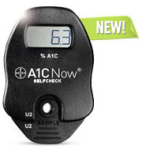Fate of Silica Nanoparticles in Simulated Primary Wastewater Treatment
Peter Dobson et al, Environ. Sci. Technol., 2009, 43 (22) pp 8622-8628
Through novel application of small-angle neutron scattering, we examined the fate of silica nanoparticles (SiO2NPs) during simulated primary wastewater treatment, by measuring, in real time, the colloidal behavior of SiO2NPs in wastewater (sewage). We examined the effects of surface functionality on SiO2NP fate in wastewater, by comparing both unfunctionalized (uncoated or “bare”) SiO2NPs and SiO2NPs functionalized with a thin coating of a nonionic surfactant (Tween 20), which is widely used in personal care and household product formulations containing engineered oxide nanoparticles. Our results show new evidence that the surface functionality of SiO2NPs plays a crucial role in their flocculation and sedimentation behavior in wastewater, and thus the likely efficacy of their removal from the effluent stream during primary wastewater treatment. Uncoated SiO2NPs did not flocculate in wastewater over typical residence times for primary treatment. Conversely, surface-functionalized (Tween-coated) SiO2NPs underwent rapid flocculation in wastewater. Our results show that the surface-functionalized SiO2NPs are likely to be removed by sedimentation to sewage sludge (typically recycled to land), whereas uncoated SiO2NPs will continue through the effluent stream. While nanoparticle design is driven by use purpose, this study shows new potential for exploiting surface functionalization of nanoparticles to modify their environmental pathways.

http://www.isis.stfc.ac.uk/science/earth-science-and-environment/managing-nanoparticle-waste-in-sewage9094.html
http://pubs.acs.org/doi/abs/10.1021/es901399q
http://www.nerc.ac.uk/research/programmes/nanoscience/
How do model hydrophobic polymers respond to interfaces having a range of chemistries from hydrophobic to hydrophilic?
To what surfaces do such polymers “stick”, and what is the magnitude of the binding free energy?
What conformational changes occur upon adsorption onto different surfaces?
How different are the dynamics at the interface, and to what extent are they influenced by the interfacial chemistry?
Water-mediated interactions drive the polymer to adsorb strongly at a hydrophobic interface and repel it from hydrophilic ones. At hydrophilic surfaces, van der Waals interactions between the polymer and the surface mitigate this water-mediated repulsion, leading to weak adsorption of the polymer. Although the polymer is strongly adsorbed to hydrophobic surfaces, it is also most dynamic there. Translational diffusion and conformational dynamics are faster at hydrophobic surfaces compared to those at hydrophilic ones.
Unwanted adsorption is a significant problem in a range of applications from separation processes (e.g.,membrane fouling6) tomarine coatings (7-10) to implants.(1,2) Alternatively, one may be interested in controlling and engineering binding in a specific manner leading to an alignment of molecules or pattern formation with applications in sensing and detection.(3-6)
The thermodynamics of adsorption are then governed by the interplay of intermolecular interactions between them. In aqueous systems, the structural organization of water molecules near a given surface and a solute induces water-mediated interactions between them.17 These water-induced interactions contribute in
addition to the direct surface-solute interactions and can be attractive (e.g., hydrophobic) or repulsive depending on the chemistry and the nature of the surface and the solute. In situations where the solute molecule is conformationally flexible,
additional important questions arise regarding preferred conformations in the adsorbed state and the dynamics of conformational transitions at the interface.
How Surface Wettability Affects the Binding, Folding, and Dynamics of
Hydrophobic Polymers at Interfaces, Langmuir article, Received April 3, 2009. Revised Manuscript Received April 27, 2009
pubs.acs.org/Langmuir
(1) Pavithra, D.; Doble, M. Biomed. Mater. 2008, 3.
(2) Wisniewski, N.; Reichert, M. Colloids Surf., B 2000, 18, 197–219.
(3) Hayden, O.; Lieberzeit, P. A.; Blaas, D.; Dickert, F. L. Adv. Funct. Mater.
2006, 16, 1269–1278.
(4) Choi, I.; Kang, S. K.; Lee, J.; Kim, Y.; Yi, J. Biomaterials 2006, 27, 4655–
4660.
(5) Mrksich, M.; Dike, L. E.; Tien, J.; Ingber, D. E.; Whitesides, G. M. Exp.
Cell Res. 1997, 235, 305–313.
(6) Shi, H. Q.; Tsai, W. B.; Garrison, M. D.; Ferrari, S.; Ratner, B. D. Nature
1999, 398, 593–597.
(7) Dobretsov, S.; Dahms, H. U.; Qian, P. Y. Biofouling 2006, 22, 43–54.
(8) Genzer, J.; Efimenko, K. Biofouling 2006, 22, 339–360.
(9) Yebra, D. M.; Kiil, S.; Dam-Johansen, K. Prog. Org. Coat. 2004, 50, 75–104.
(10) Schmidt, D. L.; Brady, R. F.; Lam, K.; Schmidt, D. C.; Chaudhury, M. K.
Langmuir 2004, 20, 2830–2836.
Static ion mass spectrometry of adsorbed protein, Anal. Chem. 1003, 65, 1431-1430
Static secondary ion mass spectrometry (SIMS) was used to analyze proteins adsorbed to biomaterial surfaces. A spectral interpretation protocol was established by examining homopolymers of 16 amino acids. This protocol allows for the assignment of peaks unique to the various amino acids. Static SIMS was used to analyze plasma proteins adsorbed to titanium. The various factors that contributed to the relative intensities observed in the spectra were explored.
Proteins are composed of 20 amino acids. The molar 5% C, 0, and N in most proteins is remarkably constant. Proteins, except for a few specific structural proteins, have
similar amino acid contents. In a study comparing the frequency of occurrence of each amino acid residue in the primary structure of 207 unrelated proteins, the number of times an amino acid is observed in a randomly chosen portion of the molecule is related only to its frequency; that is, proteins do not exhibit characteristic sequences at the local leve1. However, a concern for specific higher order distributions (apolar, polar, charged, etc.) is expressed, because such
distributions lead to specific chain folding and protein c~nformation.I~t ~i s manifestations of this higher order distribution, related to protein orientation and conformation at surfaces, that is of interest in the biological reaction of proteins at interfaces. This study provides some of the groundwork needed to explore amino acid distributions within the outermost 20 A of a protein layer.
33) Paynter, R. W.; Ratner, B. D. In Surface and Interfacial Aspects
of Biomedical Polymers; Andrade, J. D., Ed.; Plenum: New York, 1985;
(34) Klapper, M. H. Biochem. Biophys. Res. Commun. 1977,78,1018 -1024

.jpg)














